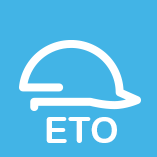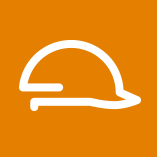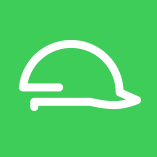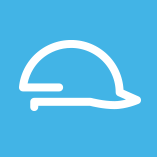Information
-
Prepared by
-
Conducted on
-
Site
Please assess the points below based on your observation (Rate/comment /provide photos).
-
1. SAFETY IS RECOGNIZED AS TOP PRIORITY: <br>- Safety Culture "visible" at entrance (e.g. ETO safety commitment) <br>- Safety for visitors (booklet rules available and explained, sign in et sign out done)<br>- Safety guidelines explained before going to the shop floor <br>- Safety communication boards updated (e.g. last incident, days since last accident)<br>- Personnel aware of latest safety messages<br>- Personnel aware of basic safety rules / Golden Rules and their meaning
-
Add media
-
2. ACCESSES TO EMERGENCY EXITS AND FIRE FIGHTING DEVICES ARE CLEAR <br>- Emergency exits are clearly identified<br>- Nothing obstructs emergency exits<br>- Nothing obstructs the way to fire extinguisher, water pipes (if any), smoke extractors, Defibrilators<br>- Can you see fire extinguish system wherever you are?
-
Add media
-
3. ZONING IS RESPECTED, FLOOR AND WORKPLACES ARE CLEAN<br>- No pallet etc. in gangways<br>- Nothing stored outside dedicated area, incl WIP<br>- No storing front of electrical board and cabinets<br>- Visual check of bins (not too full, no mix…)<br>
-
Add media
-
4. PEOPLE WEAR PPE'S<br>- PPE visual displays in the area<br>- PPE indicated on work instructions<br>- PPE worn (right type, in good condition)<br>- High visibility jackets for logistics, visitors & co-activity forklifts / workers<br>- Including sub-contractors (but self-supplied PPE)
-
Add media
-
5. PEOPLE ARE WORKING SAFELY<br>- Work at height safely (harness, ladders ok with platform & handrail, max weight ok)<br>- Daily checks of equipments (checklist for cranes, machines)<br>- Risk analysis done for non-routine operations (e.g. rework, maintenance)<br>- Respect of pedestrian aisles<br>- Chemical storage OK<br>- Machines and equipment in good conditions (incl. guarding)<br>- No cutter without retractable blade<br>- LOTO by maintenance
-
Add media
-
6. PEOPLE ARE WORKING ERGONOMICALLY<br>- Manual handling minimised or controlled as necessary.<br>- No 1 person lift exceeding 12 kg (SE Directive)<br>- Personnel follow gesture good practices (e.g. bends legs and not back)<br>- Screen and chairs in good condition and in ergonomical position
-
Add media
-
7. BUBAK IS IMPLEMENTED AND OPERATED<br>- SIM board updated for safety<br>- Green cross deployed on SIM 1 , updated<br>- Near-misses commented in SIM (e.g. blue spot on green cross)<br>- BUBAK used (i.e. do not stay permanently on the board)<br>- People (incl. managers) are reacting on real time (I See I Do) when issues are raised up
-
Add media
-
8. TEST AREAS (PRODUCTION TESTS & FAT) ARE SAFE<br>- FAT rules respected (authorized person, number of customer, safety distances when testing...)<br>- FAT personnel prevents non-qualified people to enter without supervision<br>- No zone entry/test ignition key left on equipments<br>- Insulated 1 step platforms<br>- No shunt of safety interlocks<br>
-
Add media
-
9. STORAGES ARE SAFE<br>- Structure & Fixing in good conditions, Side & foot protections<br>- Back protection for aisles protection, Stoppers on back side.<br>- Rack grid conditions & fixing.<br>- Inspection date & load displayed.<br>- Pallets are in good conditions.<br>- Pallets are stored correctly (no stacking, load secured)<br>- Safety distance with roof - structure (1m minimum)<br><br>
-
Add media
-
10. FORKLIFTS AND WATERSPIDER ARE OPERATED SAFELY<br>- Safe driving (1m/3m rule respected, adapted speed)<br>- Fork at max 10 cm from the ground in motion, on the floor when stopped<br>- Keys removed when not in use<br>- Blue lights hitting floor at ~2,5m distance<br>- Driver go down PIT safely (fully stopped, no jump)<br>- Dock safety procedures respected (no open dock, chokes and jack installed)
-
Add media














